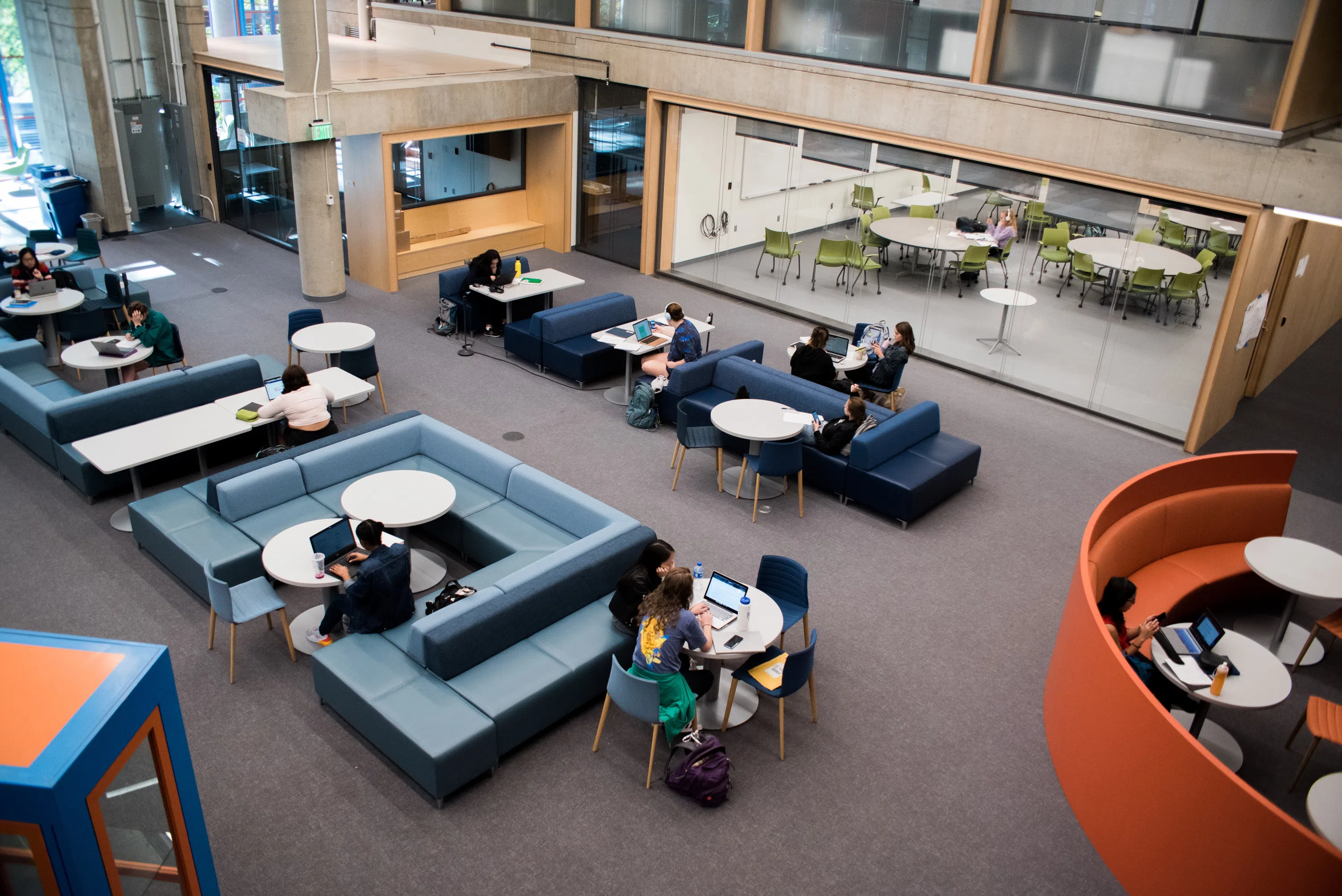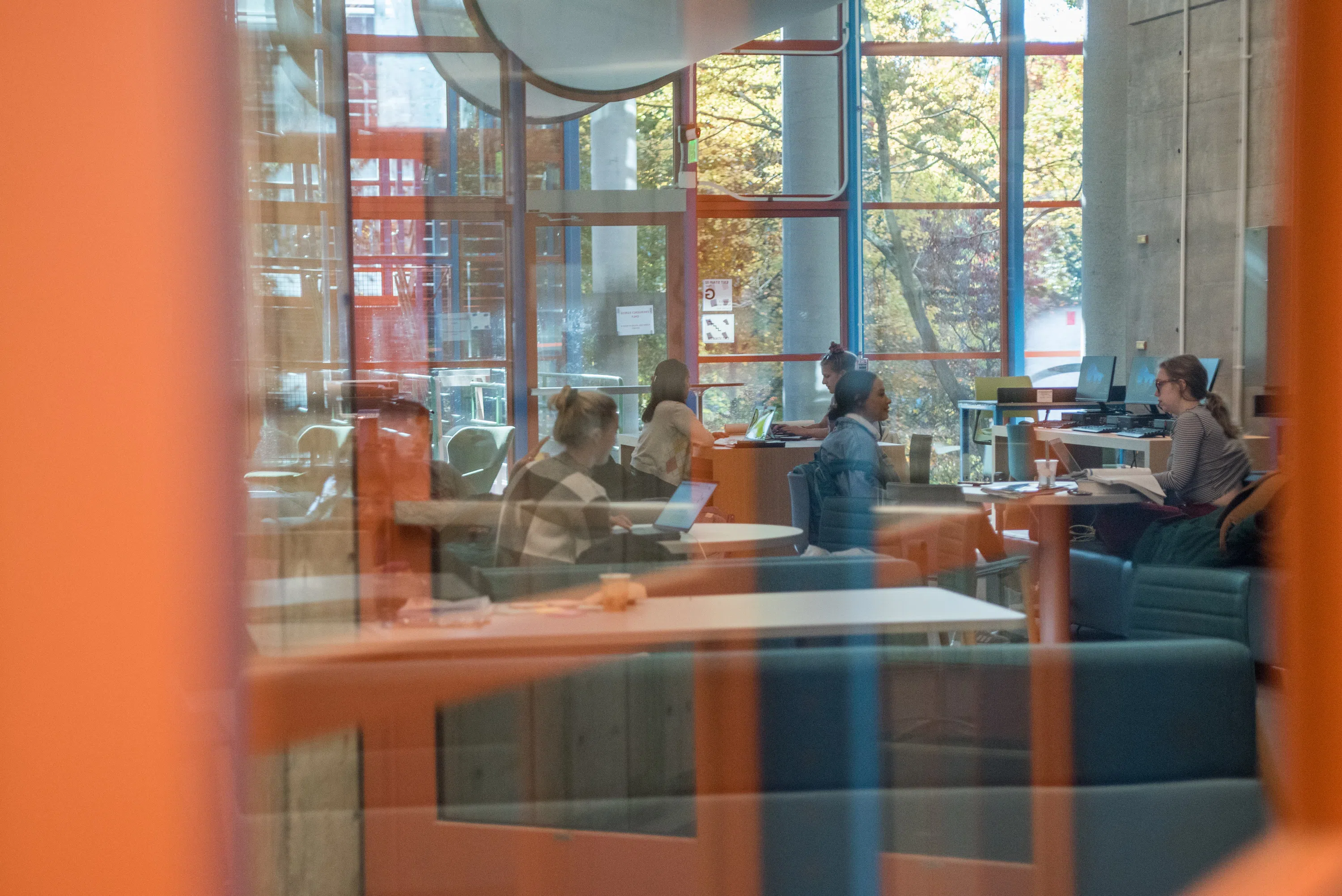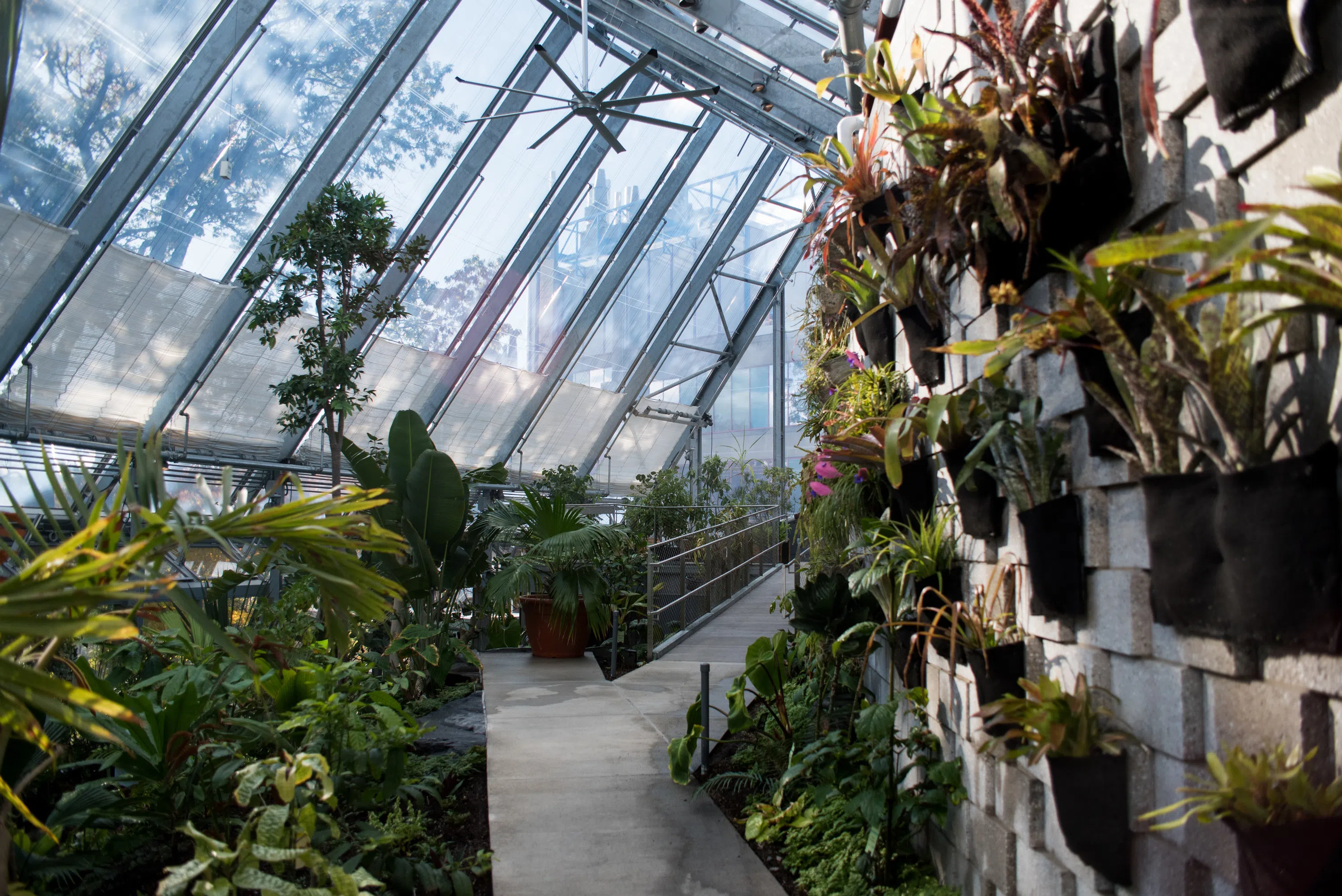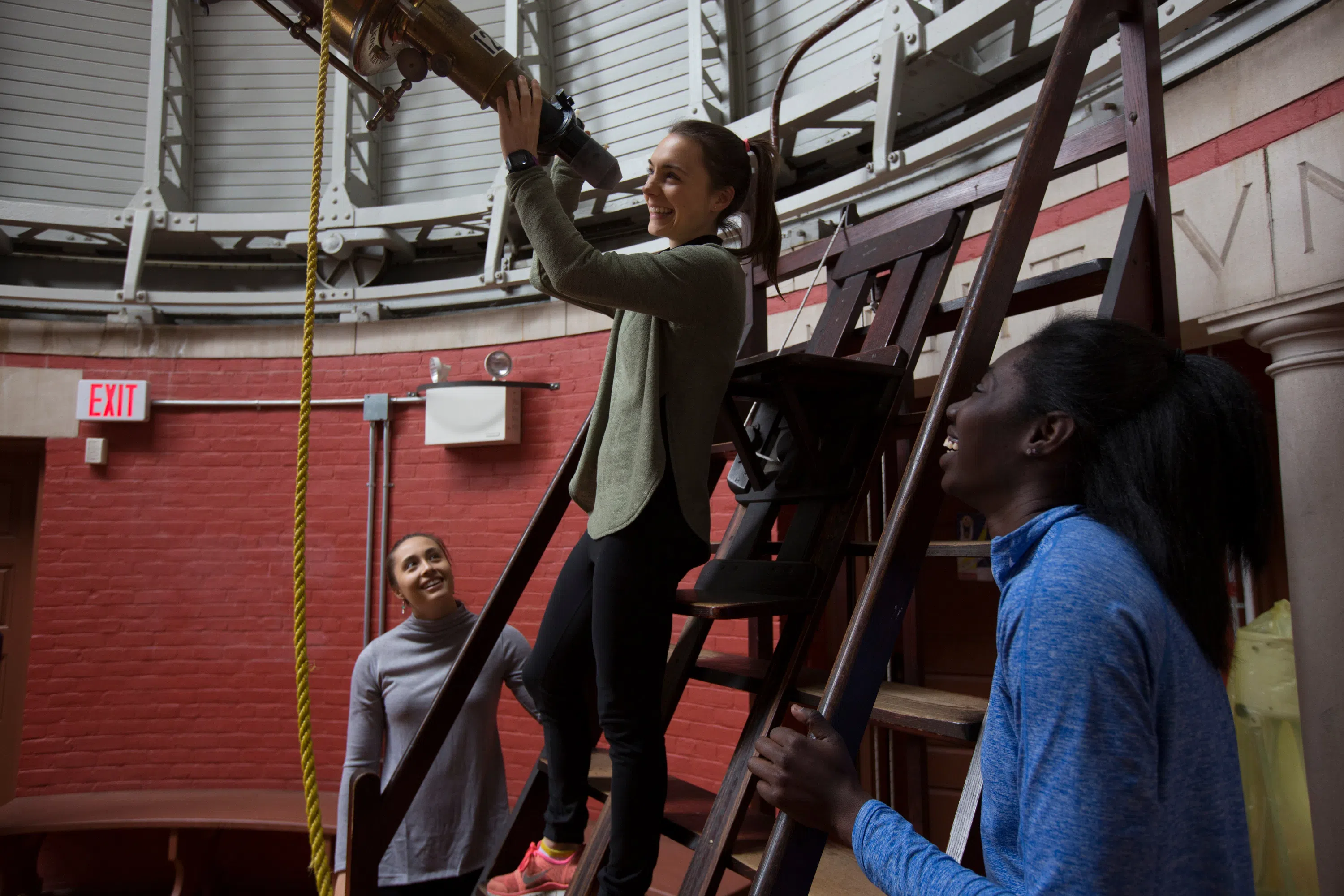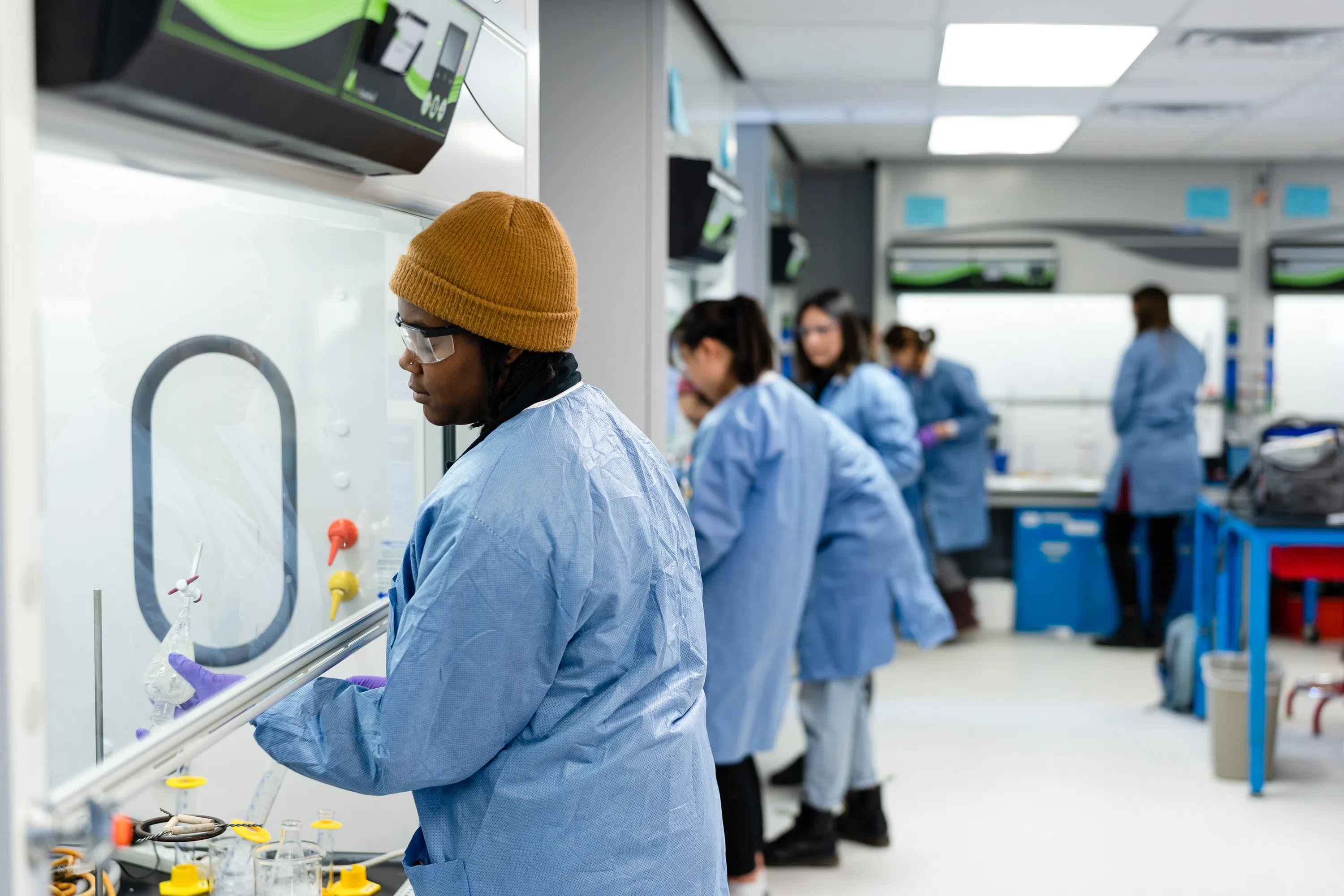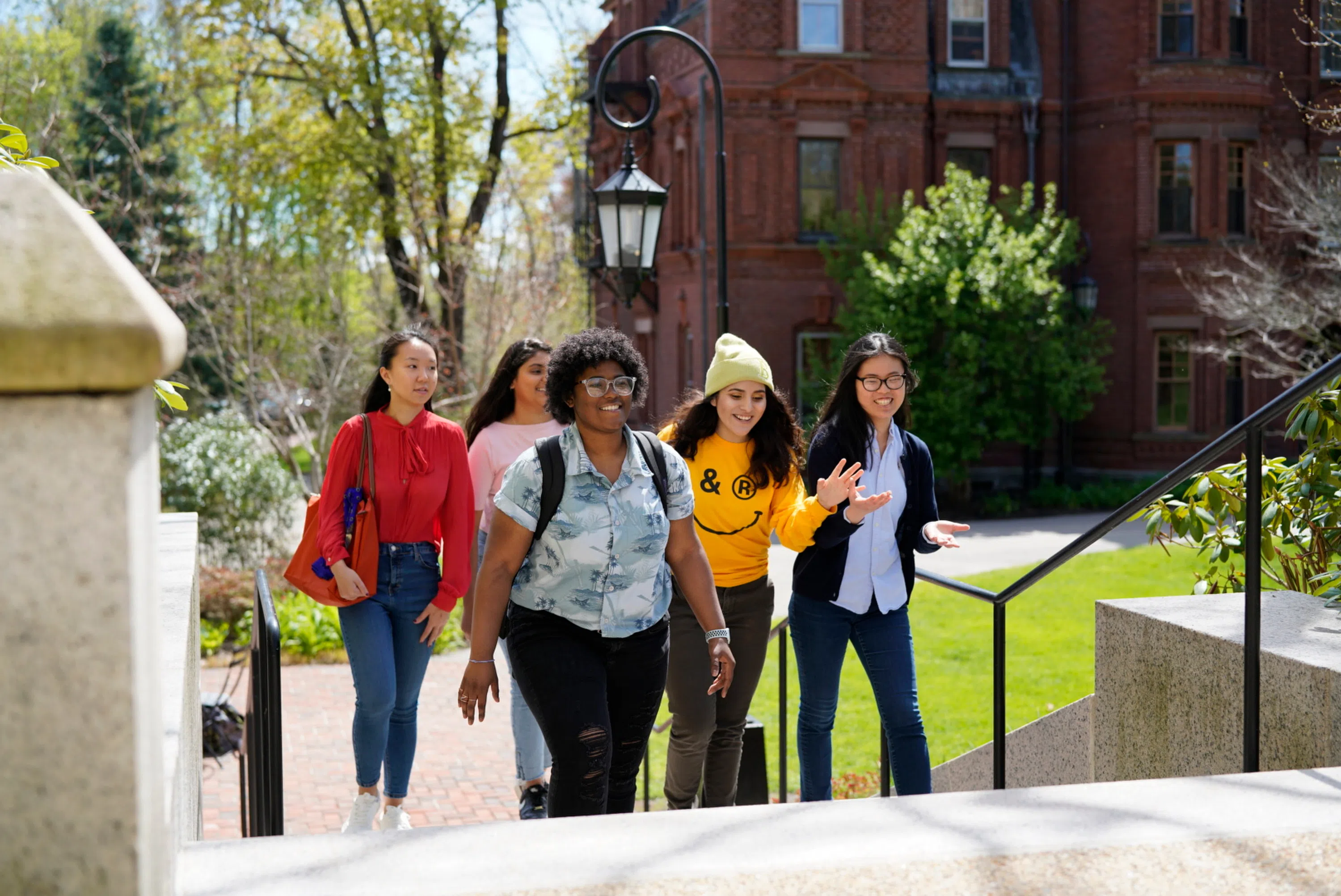Science Hill
It all STEMs from Science Hill. Home to Wellesley’s sciences and mathematics.
Media Gallery
Undergraduate Research
Global Flora Greenhouses
Whitin Observatory
Edible Ecosystem Teaching Garden
Science Hill
STEM
L Wing
Chao Foundation Innovation Hub
Sustainability
Paulson Ecology of Place Initiative
🔬 Undergraduate Research
It’s the foundation of Wellesley’s STEM education. And it comes in many shapes and sizes. The most common? You, a team of your classmates, a professor or two, researching something like: “Misinformation on the Web” in computer science; or “Adult Neural Stem Cells: Long-term Self-renewal, Replenishment by the Immune System, or Both?” in biochemistry.
When does it happen?
It could happen in your first year, in a First Year Student Research Apprenticeship. Or your second, in the Sophomore Early Research Program (SERP). Or your third or fourth, in a faculty-student collaboration or an independent research project.
Isn't it just science?
Oh, and! It’s not just STEM. Students of every major engage in research. Like, say, “Coil Me Liberated: How Black Women Use Hair to Overcome Misogynoir” in Africana studies and sociology. Or “Recognizing Climate Change as an Act of Persecution: A Tuvaluan Case Study” in political science and international relations.
🌺 Global Flora Greenhouses
Featuring: The botany museum. An interdisciplinary research and teaching node. A camellia tree planted on campus in the 1870s. And, for good measure, award winning architecture.
🔭 Whitin Observatory
Wellesley to a T. All about demystifying the mysterious and bringing the awe-inspiring within reach. Here, you'll complete research projects, chart the stars, and, if you're part of the student astronomy club, turn the observatory's dome into a giant pumpkin for Halloween.
🌻 Edible Ecosystem Teaching Garden
A designed plant community that mimics a natural ecosystem and produces food and other products useful to humans. Including a few specific habitats: a nut grove, fruit woodland, eddow (edible meadow), and a fruit thicket. Betsy’s Garden Classroom (a gift of Elizabeth Anderson Fitzgerald '60) provides teaching and research space for students maintaining the garden.
🧪 Science Hill
High atop the hill: the Laboratory Wing, the Research, Innovation, and Teaching Building, the Chao Foundation Innovation Hub, the Global Flora Greenhouses, the Whitin Observatory, the Leaky Beaker Cafe. Or, as we like to think of it: a Science Village. Open to students of every discipline. Fit for discoveries big and small. Exclusively for undergraduates. Unheard of at colleges like Wellesley. Except, well, Wellesley.
🤖 STEM
It starts with a research-based approach. It ends with invaluable scientific discovery. Featuring majors like: Astrophysics, Biochemistry, Biology, Chemical Physics, Chemistry, Computer Science, Engineering, Neuroscience, Mathematics, Physics, and many, many more!
⚗️ L Wing
The laboratory wing. Where you’ll question the old and discover the new. Where you’ll take coursework like “Computing for the Socio-Techno Web” and “Neurons, Networks, and Behaviors” and “Environmental Microbiology.” And where you’ll work alongside faculty on projects like “The Evolutionary Origin of Insect Metamorphosis” and “Genomic Research and Reality Based Interaction.” Ft. state of the art physical, computational, and data science labs, including the Human Computer Interaction Lab.
👩🏫 Chao Foundation Innovation Hub
A place to collaborate. Because collaboration really means innovation. But also: Home to the environmental science research lab, interdisciplinary teaching labs, and a 180 seat auditorium.
♻️ Sustainability
Not just a word, a commitment. First, to cutting carbon. By the end of 2022, Wellesley will have reduced carbon emissions by 37%. By 2040, we’ll be 100% carbon neutral. Second, to wasting less. By recycling, using reusable water bottles, composting waste from the dining halls, and partnering with a nonprofit that donates Wellesley’s unused food to those in need.
🗺️ Paulson Ecology of Place Initiative
A fancy name for a simple call to action: Connect to your environment. Learn from it. Protect it. The Paulson Ecology of Place Initiative reimagines Wellesley’s campus as a living laboratory and cultivates student environmental activists who shape sustainable communities around the world.
